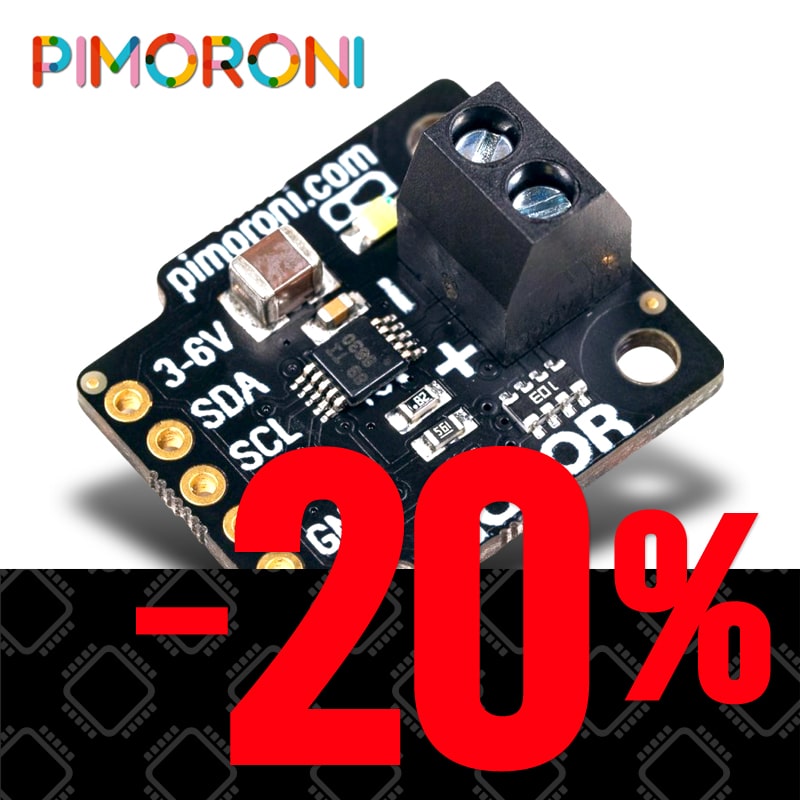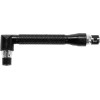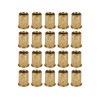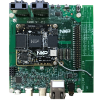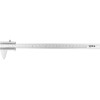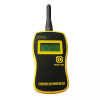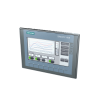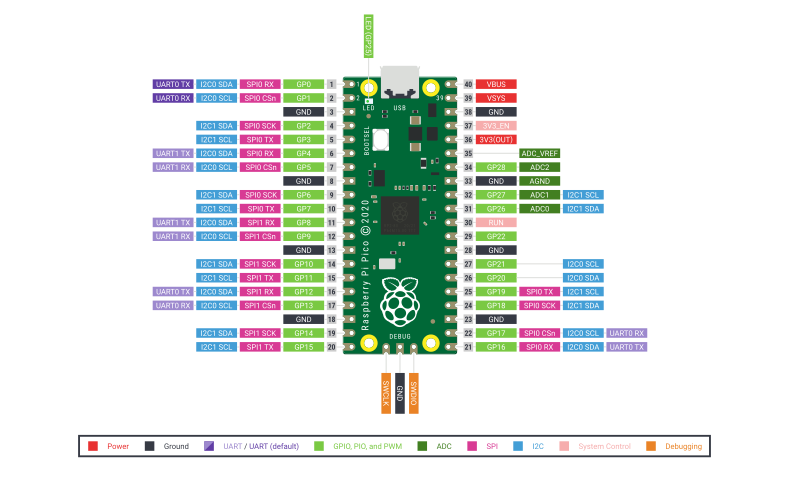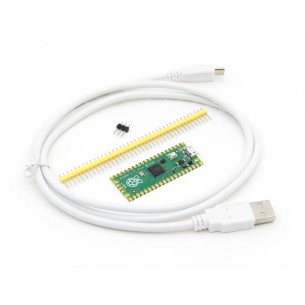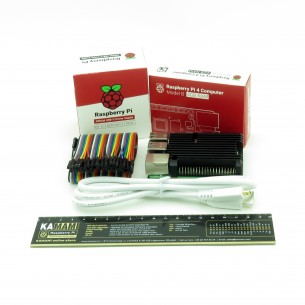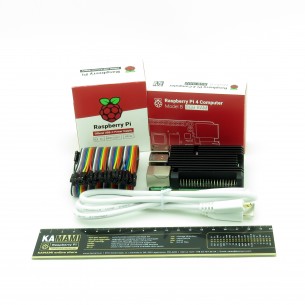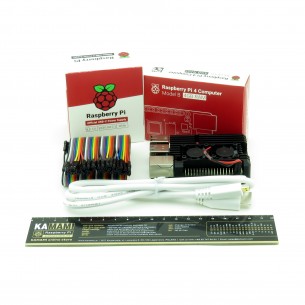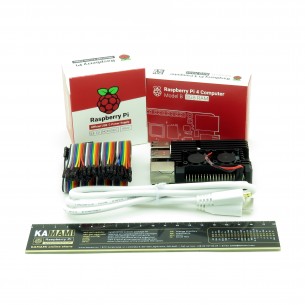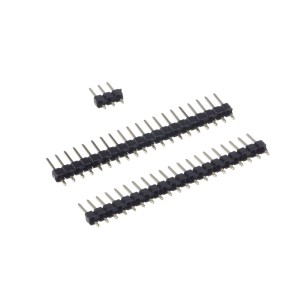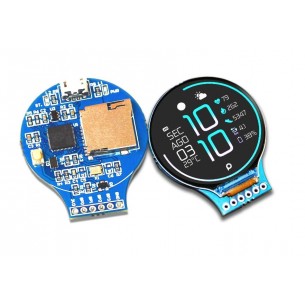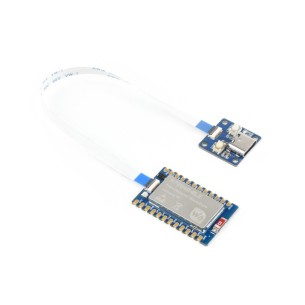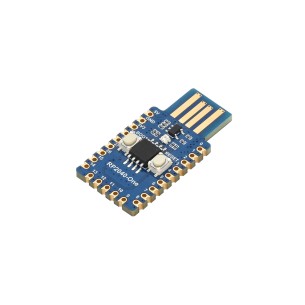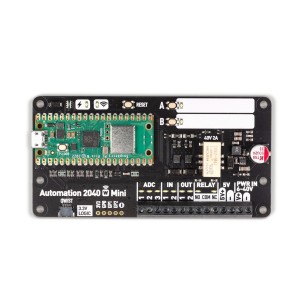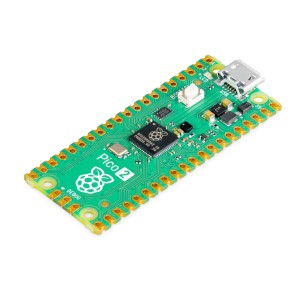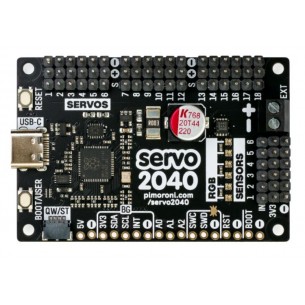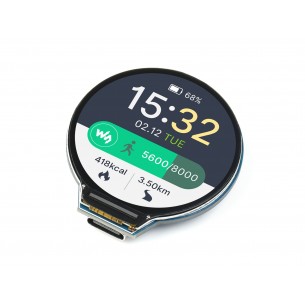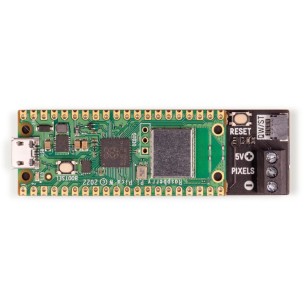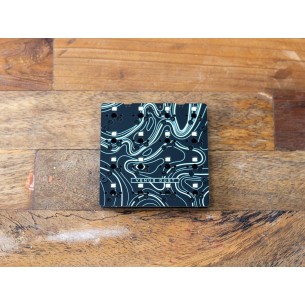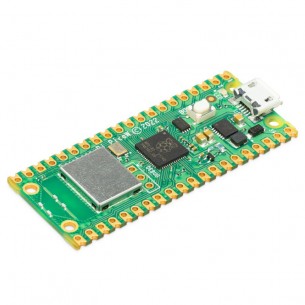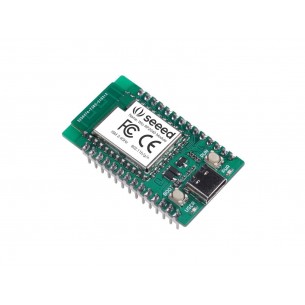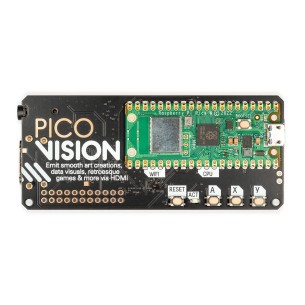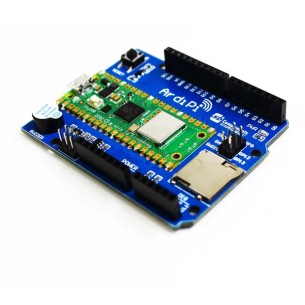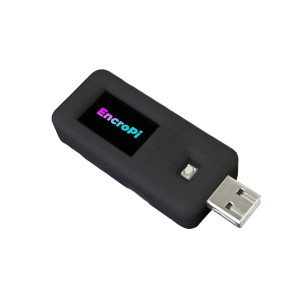- Main categories
-
- 3D PRINTING
- ARDUINO
- AUTOMATION
- BOOKS
- CYBERSECURITY
- EDUCATION
- ELECTRONICS
- Cables
- Cameras and accessories
- Communication
- Conductive materials
- Connectors
- ARK connectors (Terminal Block)
- Coaxial connectors (RF)
- Connectors
- Crocodile clip
- D-Sub drawer connectors
- DC power connectors
- FFC/FPC ZIF connectors
- Goldpin connectors
- IDC connectors
- JACK connectors
- JST connectors
- Jumpers
- Memory cards slots
- Other connectors
- Pogo pin
- RJ45 connectors
- Slip ring connector
- Supports
- Szybkozłącza
- USB connectors
- USB PD Adapters for Laptops
- Cooling
- Displays
- Electronic modules
- A/D and D/A converters
- Audio
- Barcode readers
- CAN converters
- Converters USB - UART / RS232
- Data logger
- DDS/PLL generators
- Digital potentiometers
- Encoders
- Expanders of the I/O
- Fingerprint readers
- HMI modules
- Image and video
- JTAG accessories
- Keyboards, buttons
- LED drivers
- Memory card readers
- Memory modules
- Modules with power outputs
- Motor controllers
- Power modules
- RS485 converters
- RTC modules
- Servo Controllers
- TSOP infrared receivers
- USB Converters - I2C / 1-Wire / SPI
- Voltage converters
- Gadgets
- GPS
- Intelligent clothes
- LED - diodes, displays, stripes
- Luminous wires and accessories
- Machine vission (MV)
- Memory cards and other data storages
- Passive elements
- PC accessories
- Printers
- Prototype boards
- Relays
- Semiconductors
- A/C converters (ADC)
- Analog systems
- Audio systems
- Bridge rectifiers
- Button
- D/A Converters (DAC)
- DDS synthesizers
- Digital circuits
- Diodes
- Drivers of motors
- DSP microprocessors
- Energy counters
- Energy harvesting
- ESD security
- IGBT drivers and bridges
- Interface systems
- LED drivers
- Logic converters
- Memory
- Microcontrollers
- Optotriacs and optocouplers
- Other
- PLL generators
- Power systems
- Programmable systems
- Resetting systems
- RF systems
- RTC systems
- Sensors
- SoC systems
- Timery
- Touch sensors
- Transistors
- Sensors
- Accelerometers
- Air humidity sensors
- Air quality sensors
- Current sensors
- Distance sensors
- Flow sensors
- Gas sensors
- Gyroscopes
- Hall sensors
- Humidity sensors
- Infrared sensors
- Light and color sensors
- Liquid level sensors
- Magnetic sensors (compasses)
- Medical sensors
- Motion sensors
- PH sensors
- Position sensors
- Pressure sensors
- Pressure sensors
- Reflection sensors
- Sensors 6DOF/9DOF/10DOF
- Sensors of liquid quality
- Temperature sensors
- Vibration sensors
- Sound transducers
- Switches and buttons
- Cables
- FPGA DEVELOPMENT KITS
- Measuring devices
- MECHANICS
- MINICOMPUTERS (SBC)
- POWER
- RASPBERRY PI
- Accessories for Raspberry Pi
- Audio video cables for Raspberry Pi
- Case Raspberry Pi
- Cooling for Raspberry Pi
- Displays for Raspberry Pi
- Extension modules for Raspberry Pi
- Memory cards for Raspberry Pi
- Power for Raspberry Pi
- Raspberry Pi 3 model A+
- Raspberry Pi 3 model B
- Raspberry Pi 3 model B+
- Raspberry Pi 4 model B
- Raspberry Pi 400
- Raspberry Pi 5
- Raspberry Pi 500
- Raspberry Pi cameras
- Raspberry Pi Compute Module
- Raspberry Pi model A/ B+/2
- Raspberry Pi Pico
- Raspberry Pi prototyping
- Raspberry Pi Zero
- Raspberry Pi Zero 2 W
- RETIRED PRODUCTS
- SALE
- STARTER KITS, PROGRAMMERS, MODULES
- Atmel SAM
- Atmel Xplain
- AVR
- Coral
- DFRobot FireBeetle
- ESP32
- ESP8266
- Feather / Thing Plus
- Freedom (Kinetis)
- M5Stack
- Micro:bit
- Nordic nRF
- Other development kits
- Particle Photon
- Peripheral modules
- PIC
- Raspberry Pi RP2040
- RFID
- RISC-V
- Seeed Studio LinkIt
- Segger programmers
- SOFTWARE
- Sparkfun MicroMod
- STM32
- STM32 Discovery
- STM32 MP1
- STM32 Nucleo boards
- STM8
- Teensy
- Universal programmers
- WRTNode
- XIAO/Qt PY
- Atmel SAM
- WORKSHOP
- Chemistry
- Distilled water
- Agents for securing electronics
- Cleaning and preserving agents
- Compressed air
- Conductive paints and varnishes
- Etcher
- Freezing
- Gas for lighters and burners
- Isopropyl alcohol (IPA)
- Label removers
- Lubricants, oils
- Pastes and adhesives thermally conductive
- PCB cleaning products
- Thermopads - thermally conductive tapes
- CNC milling machines
- Crimping tools
- Dispensing needles
- Gluers
- Glues
- Heat-shrink tubing
- Insulation strippers
- Knives
- Laboratory power supplies
- Mikroskopy
- Mini drills and grindrers
- Organizers
- Power strips
- Power tools
- Safety glasses
- Scissors
- Soldering
- Antistatic mats and accessories (ESD)
- BGA balls
- BGA rework stations
- Brushes and ESD brushes
- Desoldering Wick
- Handles, magnifiers
- Heat guns
- Heaters and soldering irons
- Laminates
- Portable soldering irons
- Silicone Soldering Mats
- SMD Accessories
- Soldering accessories
- Soldering chemistry
- Soldering irons
- Soldering pastes
- Soldering pots
- Soldering stations
- Soldering tips
- Sponges and cleaners
- Stand for soldering irons
- Tin
- Tin extractors
- Ultrasonic cleaners
- Tapes (aluminum, kapton, copper, insulating)
- Tools
- Tweezers
- Vices
- Chemistry
- 3D PRINTING
New products
New products
zł15.70 tax excl.
Module with the RP2040 microcontroller with two ARM Cortex-M0 + cores operating at 133 MHz, 256 kB RAM and 30 GPIO. The board also has 2 MB of external QSPI flash memory. Module can be programmed in C/C++ or microPython. Raspberry Pi Pico

Free shipping
free shipping in Poland for all orders over 500 PLN

Same day shipping
If your payment will be credited to our account by 11:00

14 days for return
Each consumer can return the purchased goods within 14 days
Description
The Raspberry Pi Pico is the first board to feature a microcontroller designed by the Raspberry Pi foundation. The chip that is the heart of this board has been equipped with two ARM Cortex M0+ cores operating at a frequency of 133 MHz, 256 KB of RAM and 30 GPIO ports. The microcontroller itself is not equipped with flash memory, but on the board there is an external memory with a capacity of 2 MB connected via the QSPI interface. The platform supports the popular MicroPython and C/C++ programming languages. Programs can be uploaded to memory via the USB interface in mass storage mode or by using an external programmer that supports the SWD interface.

Kamami is the official distributor of Raspberry Pi minicomputers and dedicated accessories.
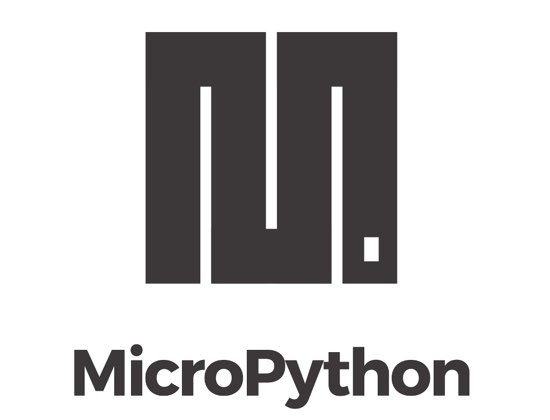
MicroPython
MicroPython is a special version of the Python 3 programming language, prepared to run directly on embedded systems such as the Raspberry Pi Pico. The version prepared especially for the RP2040 microcontroller, supports REPL, an interactive shell that allows you to execute scripts, typing into the console and viewing the results of the program in it. Thanks to this technology, it is also possible to save the program in flash memory.
C/C++
To facilitate the programming of the RP2040 microcontroller in C / C ++, the Raspberry Pi Foundation has prepared an official SDK toolkit that can be integrated with popular IDEs such as Visual Studio Code or Eclipse. The entire environment configuration process is described in the Getting started with Raspberry Pi Pico document.
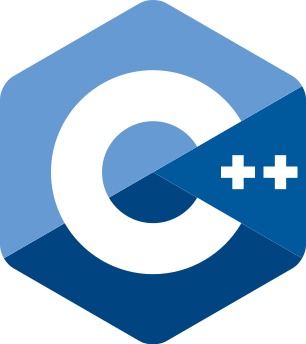

Uploading the program via the USB interface
The Raspberry Pi Pico can be programmed via the USB interface, it can be done in two ways.
The first is the USB mass storage mode, to program the board in this way, press and hold the BOOTSEL button, and then connect the board to the computer with a USB cable. The device will be recognized as mass memory to which you can upload the program in the same way as copying files to a pendrive. After uploading the program, the microcontroller will automatically reset and start the uploaded program. This method is suitable for uploading programs written in C / C ++ or for uploading the MicroPython interpreter.
The second way works only with programs written in MicroPython and requires prior loading of the interpreter using the first method. This method consists in saving the program layout transferred with REPL in the memory.
Programming/Debugging via SWD interface
When programming in C/C++, there is often a need to repeatedly test the program. Loading a program via USB requires repeating the procedure every time, disconnecting the board from the computer, pressing the button and connecting the board, and then finding the compiled program and copying it to memory. The whole thing takes quite a long time, but fortunately it can be simplified using an external programmer with SWD interface. Programming via SWD is much faster, you only need to connect the programmer once with a 3-pin connector and power supply e.g. via USB and you can upload programs directly from the IDE. In addition, you can debug the program in this way and efficiently find any errors in the code by running it line by line.
Raspberry with Raspberry
The Raspberry Pi Pico is designed to be programmed directly with the Raspberry Pi 4B or 400. The manufacturer has prepared detailed instructions for setting up programming environments and ready-made configuration scripts. Pico can be programmed from the Raspberry minicomputer both via USB and via SWD. The big advantage of this solution is no need to use an external SWD programmer. Pico ports can be connected to RPI ports. To ensure a stable connection, you should connect Pico directly to the minicomputer, the use of the contact plate may introduce interference.
To use the full potential of programming environments, it is recommended to use minicomputers with min. 4 GB of RAM.
Pico with Pico
The Raspberry Pi Foundation has prepared the Picoprobe application that allows you to change RPI Pico into an SWD programmer and a USB - UART converter. Thanks to this, you can program the RP2040 without the need for an SWD programmer, using only the second board with the RP2040 microcontroller.
Warning!
The Raspberry Pi Pico board does not include goldpin connectors and a microUSB cable. Our offer includes connectors for GPIO 1x40 (they can be easily divided into two 1x20 connectors) and a connector 1x3 for a programmer. There are also ready-made kits containing connectors and microUSB cable.
Features
- RP2040 microcontroller designed by Raspberry Pi
- Dual ARM Cortex-M0 + cores clocked up to 133 MHz
- Dxternal flash memory: 2 MB
- RAM memory: 264 kB
- Pads for soldering goldpin connectors or direct soldering to the base plate
- USB 1.1 running in Host and Device modes
- Support low power mode and idle mode
- Drag & Drop programmable in USB mass storage mode
- Support for SWD interface for programming and debugging
- Leads of the 26 GPIO
- Extensive communication interfaces:
- 2 x SPI
- 2 x I2C
- 2 x UART
- 3 x 12-bit ADC
- 16 PWM channels
- Built-in real time clock (RTC)
- Accelerator for floating point numbers
- Temperature sensor
- Supply voltage: 1.8 - 5.5 V
- Working temperature: -20 ° C ~ 85 ° C (recommended maximum temperature 70 ° C)
- Dimensions: 51 x 21 mm
Data sheet
- Microcontroller
- RP2040
- Flash memory
- 2 MB
- Number of I/O
- 26
- Ethernet
- none
- WiFi/BT module
- No
- Bluetooth module
- No
- MicroSD slot
- No
- Length
- 51mm
- Width
- 21 mm
- USB connector type
- microUSB type B
Responsible person BTC Korporacja sp. z o. o. Lwowska 5 05-120 Legionowo Poland sprzedaz@kamami.pl 22 767 36 20
Select contents of yor set
Moduły elektroniczne
You might also like
Starter kit containing Raspberry Pi Pico, necessary connectors and a microUSB cable. The kit is recommended for people programming in MicroPython
Regular pricezł29.90zł25.90 24hAvailable quantity: 10 AvailableKit containing Raspberry Pi Pico and Raspberry Pi 4B 4 GB. The kit also includes the necessary connectors, cables, power supply and housing - heat sink
Delivery date unknown No product available!
Kit containing Raspberry Pi Pico and Raspberry Pi 4B 4 GB. The kit also includes the necessary connectors, cables, power supply and housing - heat sink
Delivery date unknown No product available!
Kit containing Raspberry Pi Pico and Raspberry Pi 4B 4 GB. The kit also includes the necessary connectors, cables, power supply and housing - heat sink
Delivery date unknown No product available!
Kit containing Raspberry Pi Pico and Raspberry Pi 4B 4 GB. The kit also includes the necessary connectors, cables, power supply and housing - heat sink
Delivery date unknown No product available!
A set of goldpin male connectors intended for Raspberry Pi Pico boards. The set includes two 20-pin strips and one 3-pin strip with a pitch of 2.54 mm. Soldered connectors enable easy connection of expansion modules and other accessories
zł1.80 Delivery date unknown No product available!
Other products in the same category (16)
Module with round 1.28" IPS LCD display and 240x240 px resolution and RP2040 chip. SB Components 24018
zł190.51 24hAvailable quantity: 4 AvailableThe RP2040 MCU board combines the high performance of two ARM Cortex M0+ cores clocked at up to 133 MHz, with 264 KB of SRAM, 2 MB of Flash, and integrated Bluetooth 5.1 for easy wireless communication. With simple programming, multiple GPIO interfaces, and support for C/C++, MicroPython, and Arduino, the board is ideal for IoT projects and other advanced applications. It comes with a USB Type-C adapter. Waveshare RP2040-BLE-Kit
zł33.35 24hAvailable quantity: 3 AvailableBoard with the RP2040 microcontroller in the form of a USB dongle. Equipped with edge connectors, RGB LED, boot and reset button. Waveshare RP2040-One
zł25.74 24hAvailable quantity: 17 AvailableA kit containing an LED strip driver module and WS2812/Neopixel tape. Designed to easily and quickly create animations using popular RGB LED strips. Pimoroni PIM657
zł187.89 Delivery date unknown No product available!
Module with a 7-color ACeP e-Paper display with a diagonal of 7.3" and a resolution of 800 x 480 pixels, equipped with Raspberry Pi Pico W. It offers WiFi communication and has built-in buttons with LED indicators, which allows you to build a simple user interface. Included with accessories. Pimoroni PIM671
zł729.00 Delivery date unknown No product available!
Expansion module with a Raspberry Pi Pico W board equipped with WiFi communication. The module has a built-in relay, buffer inputs, sink outputs and analog inputs. Perfect for controlling fans, pumps, solenoid valves, large motors, electronic locks or LED lighting. Pimoroni PIM652
zł282.67 Delivery date unknown No product available!
Raspberry Pi Pico 2, based on the RP2350 microcontroller, using the application and functional applications of the Cortex M33 and RISC-V cores, doubled SRAM memory and advanced security function, including Arm TrustZone. It is hardware and software with a connected model, which provides an attractive operation for enthusiasts and specialists in systems used
zł24.50 24hAvailable quantity: 2087 AvailableServo driver based on the Raspberry Pi RP2040 microcontroller. It allows you to control up to 18 servos, has 6 analog inputs and a QW/ST connector for connecting additional sensors. Pimoroni PIM613
zł123.86 24hAvailable quantity: 7 AvailableModule with a round 1.28" IPS LCD display with a resolution of 240x240 px and RP2040 microcontroller. Equipped with an accelerometer and a gyroscope. Waveshare RP2040-LCD-1.28
zł77.05 24hAvailable quantity: 18 AvailableLED strip driver module dedicated to the WS2812, Neopixel and SK6812. Designed to easily and quickly create animations using popular RGB LED strips. Pimoroni PIM653
zł87.80 24hAvailable quantity: 2 AvailableA module for building a mechanical keyboard with 16 buttons and backlight. Based on the RP2040 chip, it has sockets compatible with Cherry-MX switches. Pimoroni PIM567
zł232.36 4 weeks No product available!
The board with the RP2040 microcontroller equipped with two ARM Cortex-M0 + cores operating at a frequency of 133 MHz, 264 kB RAM. The board also has 2 MB of QSPI flash memory. In addition, the board is equipped with the Infineon CYW43439 system, extending the board with wireless connectivity. Raspberry Pi SC0918
zł27.90 24hAvailable quantity: 1906 AvailableThe board with the RP2040 microcontroller equipped with two ARM Cortex-M0 + cores, which operate at a frequency of 133 MHz and 264 kB RAM. The additional ESP8285 system allows communication in the WiFi network. Seeed Studio 102991555
zł61.34 24hAvailable quantity: 1 AvailableVersatile digital video module. It uses two RP2040 chips (one in the form of a Raspberry Pi Pico W board and the other as a separate RP2040 microcontroller) and is equipped with an HDMI output connector. Pimoroni PIM674
zł251.07 Delivery date unknown No product available!
Development board equipped with the Raspberry Pi Pico W module. It is an interesting alternative to Arduino Uno boards. It has a compatible shape and pin layout, while making available the large resources offered by the RP2040 microcontroller. Can be programmed with Arduino, MicroPython and CircuitPython. SB Components 26630
zł101.08 Delivery date unknown No product available!
USB RTC module based on Raspberry Pi RP2040 microcontroller. It combines MicroSD card slot, LCD display and CR1220 battery holder. SB Components SKU25138
zł296.82 24hAvailable quantity: 3 Available

Module with the RP2040 microcontroller with two ARM Cortex-M0 + cores operating at 133 MHz, 256 kB RAM and 30 GPIO. The board also has 2 MB of external QSPI flash memory. Module can be programmed in C/C++ or microPython. Raspberry Pi Pico

